Alexander Brodsky brings paper architecture and Soviet design to the fore
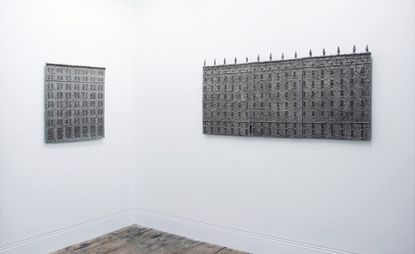
Unfired clay sculptures will be exhibited with new drawings by Russian architect Alexander Brodsky at Betts Projects in London. The works on display evoke his restrained style, showing the continuation of an interest in simple building materials and accessible tools.
For the hybrid craftsman, Brodsky’s work is driven by his interest in preserving traditional Russian building methods. His sculptures, made with unfired clay, reference local and low-cost materials and come in contrast to the steel and glass seen in new buildings in Moscow, which he rejects. The depictions of tall terraces with oblong windows and gabled roofs call for the preservation of historic Russian architecture.
Brodsky graduated from the Moscow Architecture Institute in 1978 and became known as a member of the Paper Architects, a dissenting group of graduates who rebelled against the monotony of standardised communist architecture. They chose to make paper models, instead of concrete monstrosities, to free them from state control.
In the 1980s, Brodsky began collaborating with fellow paper architect and friend Ilya Utkin, creating a series of etchings of their utopian worlds filled with historic architectural styles, from neoclassical to constructivist. After his success he moved to New York to pursue art and set his conceptual ideas free.
His drawings in pencil on tracing paper, which are shown here for the first time, bring his ideas and interest in the physicality of form together. Drawings of tools blur with bird’s eye views of buildings as the vocabulary of the artist and the architect blends. Taking an Arte Povera approach to Soviet design, Brodsky’s works call for a return to material and a considered approach to Russian architectural history.

His drawings in pencil on tracing paper, which are shown here for the first time, bring his ideas and interest in the physicality of form together. Pictured: Untitled, 2016.
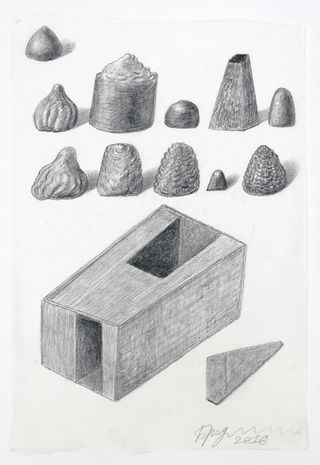
Untitled, 2016.
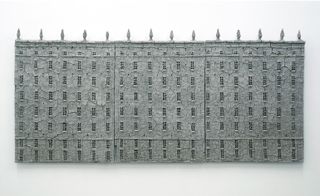
His sculptures, made with unfired clay, reference local and low-cost materials and come in contrast to the steel and glass seen in new buildings in Moscow, which he rejects. Pictured: Untitled, 2014.
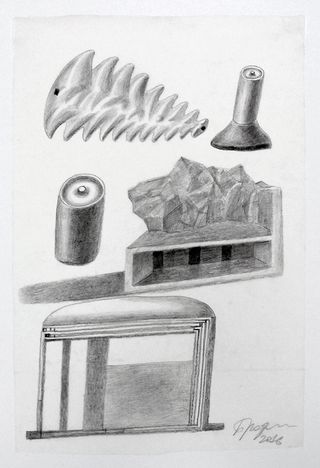
Untitled, 2016.
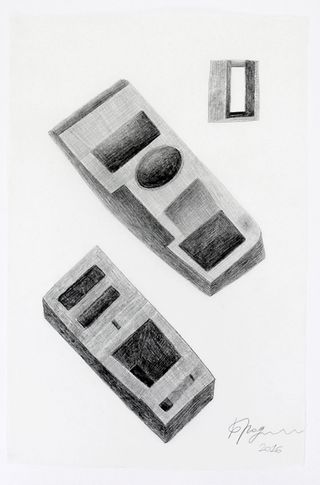
Untitled, 2016.
INFORMATION
‘Reliefs’ is on view until 20 November 2016. For more information, visit the Betts Project website
ADDRESS
Betts Project
100 Central Street
London EC1V 8AJ
Wallpaper* Newsletter
Receive our daily digest of inspiration, escapism and design stories from around the world direct to your inbox
Harriet Thorpe is a writer, journalist and editor covering architecture, design and culture, with particular interest in sustainability, 20th-century architecture and community. After studying History of Art at the School of Oriental and African Studies (SOAS) and Journalism at City University in London, she developed her interest in architecture working at Wallpaper* magazine and today contributes to Wallpaper*, The World of Interiors and Icon magazine, amongst other titles. She is author of The Sustainable City (2022, Hoxton Mini Press), a book about sustainable architecture in London, and the Modern Cambridge Map (2023, Blue Crow Media), a map of 20th-century architecture in Cambridge, the city where she grew up.
-
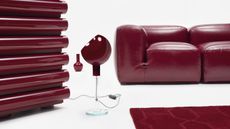 Gucci’s ‘Design Ancora’ reimagines furniture classics in rich red
Gucci’s ‘Design Ancora’ reimagines furniture classics in rich redGucci launches new editions of Italian design icons in an alluring deep red, showcased during Milan Design Week 2024
By Simon Mills Published
-
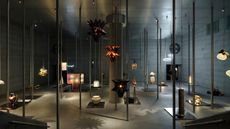 Loewe’s Jonathan Anderson drafts artists to create 24 extraordinary lamps at Milan Design Week 2024
Loewe’s Jonathan Anderson drafts artists to create 24 extraordinary lamps at Milan Design Week 2024Loewe creative director Jonathan Anderson commissioned international artists and artisans to explore ‘illumination within the house’ with a series of lamps and lighting installations, shown at a group exhibition at Milan Design Week 2024
By Scarlett Conlon Published
-
 What are polynucleotides? Trying the skin injectable made from salmon sperm
What are polynucleotides? Trying the skin injectable made from salmon spermPolynucleotides are the latest in skin injectables, containing DNA derived from the gonads of salmon. Wallpaper* Beauty & Grooming Editor Hannah Tindle tries them to discover exactly how they work
By Hannah Tindle Published
-
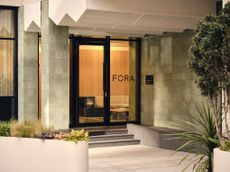 Henry Wood House’s postmodernist bones are refreshed by Nice Projects in London
Henry Wood House’s postmodernist bones are refreshed by Nice Projects in LondonNice Projects breathes new life into the Henry Wood House in London, offering ample flexible office spaces for modern workers
By Daven Wu Published
-
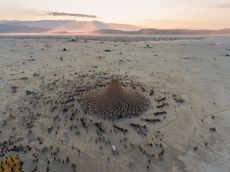 ‘Bio-spaces’ exhibition at Roca London Gallery celebrates biophilic design
‘Bio-spaces’ exhibition at Roca London Gallery celebrates biophilic design‘Bio-Spaces: regenerative, resilient futures’ opens at the Roca London Gallery as ‘a call to action to stop designing nature out’
By Clare Dowdy Published
-
 Don’t Move, Improve 2024: London’s bold, bright and boutique home renovations
Don’t Move, Improve 2024: London’s bold, bright and boutique home renovationsDon’t Move, Improve 2024 reveals its shortlist, with 16 home designs competing for the top spot, to be announced in May
By Ellie Stathaki Published
-
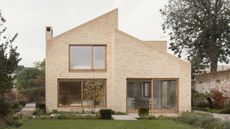 Timber-framed Wimbledon house is a minimalist, low-energy affair
Timber-framed Wimbledon house is a minimalist, low-energy affairA new timber-framed Wimbledon house is designed to blend into its traditional surroundings with a neat brick façade, careful massing and pared back interiors
By Jonathan Bell Published
-
 London Science Museum’s Energy Revolution gallery champions sustainable exhibition design
London Science Museum’s Energy Revolution gallery champions sustainable exhibition designThe Energy Revolution gallery opens at London’s Science Museum, exploring decarbonisation through sustainable exhibition design by Unknown Works
By Ellie Stathaki Published
-
 This South Downs house stands as a testament to the value of quiet refinement
This South Downs house stands as a testament to the value of quiet refinementAt one with the landscape, a South Downs house uses elements of quintessential country villas and midcentury gems with modern technologies
By Jonathan Bell Published
-
 Ash Tree House offers a contextual approach to a north London site
Ash Tree House offers a contextual approach to a north London siteAsh Tree House by Edgley Design is a modern family home in a north London conservation area's backyard site
By Ellie Stathaki Published
-
 In memoriam: John Miller (1930-2024)
In memoriam: John Miller (1930-2024)We remember John Miller, an accomplished British architect and educator who advocated a quiet but rigorous modernism
By Jonathan Bell Published